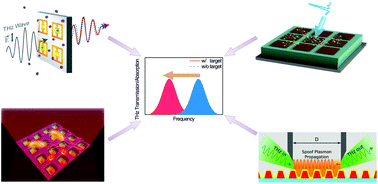Mechanisms and applications of terahertz metamaterial sensing: a review
Abstract
Terahertz (THz) technology has attracted great worldwide interest and novel high-intensity THz sources and plasmonics are two of the most active fields of recent research. Being situated between infrared light and microwave radiation, the absorption of THz rays in molecular and biomolecular systems is dominated by the excitation of intramolecular and intermolecular vibrations. This indicates that THz technology is an effective tool for sensing applications. However, the low sensitivity of free-space THz detection limits the sensing applications, which gives a great opportunity to metamaterials. Metamaterials are periodic artificial electromagnetic media structured with a size scale smaller than the wavelength of external stimuli. They present localized electric field enhancement and large values of quality factor (Q factor) and show high sensitivity to minor environment changes. In the present work, the mechanism of THz metamaterial sensing and dry sample and microfluidic sensing applications based on metamaterials are introduced. Moreover, new directions of THz metamaterial sensing advancement and introduction of two-dimensional materials and nanoparticles for future THz applications are summarized and discussed.

- This article is part of the themed collection: Recent Review Articles


 Please wait while we load your content...
Please wait while we load your content...